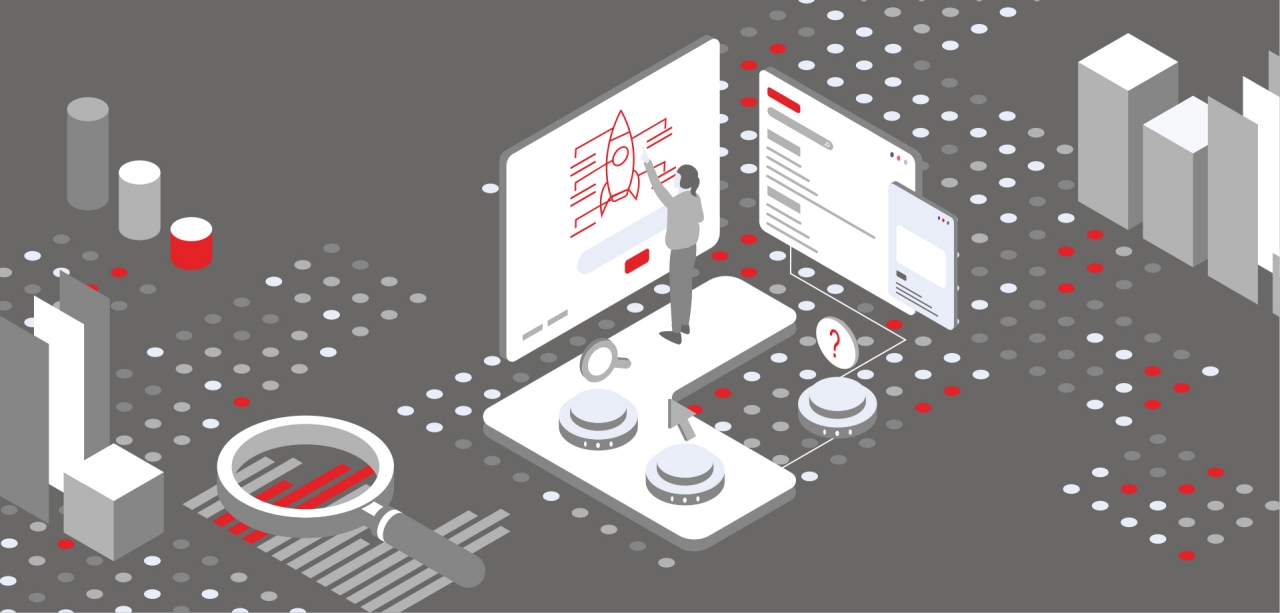The optimization tool for usability, conversion, interaction and UX.

What we do?
We test the usability and user experience of your product with users and gather target group insights as well as problems and opportunities for optimization. The participants, "real" potential users, work on realistic use cases and are observed and interviewed, optionally with eye tracking or mouse tracking. The tests can take place remotely (e.g. via Teams or Zoom), in our lab in Munich or worldwide in any major city.
Our moderators observe 6-20 users from the target group as they solve given use cases on prototypes or running websites or applications. They think out loud while using the test material. After use, various aspects of the experience are explored in an in-depth interview.
What are typical questions?
• How is a new prototype or feature received?
• Where are users having usage problems?
• Why do so many users abort at a certain point in the ordering process?
• Why do so many customers contact our customer service?
• How can we improve the conversion rate of a landing page and the entire user journey, including advertising media?
• Does the content tonality and presentation fit the target group?
How does it help?
• Better understanding of how target audiences use a product or website.
• Usability increase by 135%* on average
• Conversion rate optimization by an average of 100%*.
• Efficient use of resources (UX conception, UX design, programming) by focusing on what is important to the users.
• Reduction of support efforts.
• Maximized ad impact through a higher CVR.
What are the limitations?
• The method focuses on finding all usability problems and does very well so. It is not suitable to produce representative results.
• It isn’t well suited to answer questions centered around taste, e.g., graphic design, acceptance of features etc.
* Source: https://www.nngroup.com/articles/return-on-investment-for-usability/
Key Infos
When to use?
When lo-fi prototypes are available, a first usability test can be run. It can also be done with more refined prototypes or running apps and web sites.
Combine with
A representative survey in order to obtain design or functionality preferences. Card sorting before functional layouts & prototypes are built, in order to create a sustainable foundation for good usability.
Variants and options
On-site (with one-way mirror) or remote, with phones, desktops, or TV’s. An unmoderated version can help gather data from bigger samples, with already running websites and apps.
FAQ
What can be tested with a user experience test?
All physical and digital products such as websites or apps.
In the case of digital products, concepts and prototypes of all kinds (wireframes, low-fidelity, high-fidelity) can be subjected to a usability test in addition to "finished" live websites or apps. In such cases, the interviewer supports the tester during use where necessary.
When should you test with a user experience test?
In the development process, as soon as initial ideas for interaction designs, wireframes or the structure of the product are available, i.e. at the earliest possible stage.
Otherwise, it is a good idea to involve users before major releases or relaunches, so that the product can still be optimized before it is released; in principle, it is possible to
How many people should be tested with in a user experience test?
Typically, many usability problems can already be uncovered with 5-6 users.* If different target groups (e.g., current customers and potential customers) or devices or different use cases of the product are considered in a test, a larger number of participants is recommended in order to meet the different usage requirements and to gather insights about all groups.
Based on our experience, a sample size of 12 participants has proven to be effective and cost-efficient for one-off tests, and 6 participants per iteration for iterative tests. However, sometimes it may be advisable to work with larger numbers of participants (up to 30).